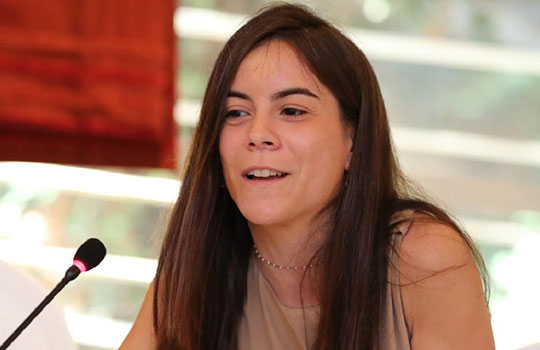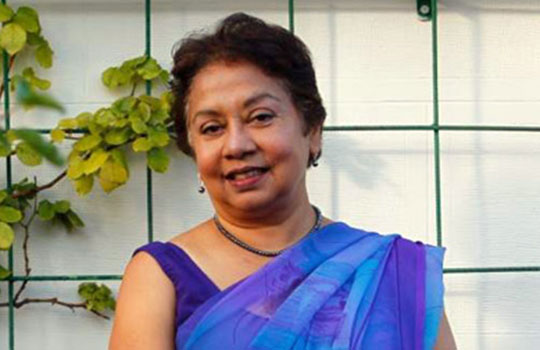Maria Moitinho de Almeida and Debarati Guha-Sapir
In March 2019, Cyclone Idai barreled through four eastern provinces of Mozambique, bringing a deadly storm surge to coastal areas. The cyclone was preceded by floods in late January the same year, already imposing its own havoc on those otherwise spared by the cyclone. Both these events caused widespread devastation of homes, cultivated land, and other sources of livelihood—mainly affecting the poor rural areas. A month later, another tropical storm, Cyclone Kenneth, hit the country’s north.
Mozambique is a country that is prone to natural disasters, having experienced 46 cyclones and floods in the past 30 years. Some provinces—such as Cabo Delgado, Nampula, Manica, Zambezia, and Sofala, which were affected by Cyclone Idai or Cyclone Kenneth—are particularly at risk, with occurrences of extreme weather events at frequent intervals.
The country also has a poor health history, especially in the areas exposed to floods and cyclones. In these provinces, vaccination coverage is frequently insufficient to achieve minimum herd immunity levels, making epidemic outbreaks more likely. In a post-disaster setting, access to healthcare can be central to an effective response and recovery. Yet in Mozambique, there are only six physicians per 100 000 population, compared to 280 per 100 000 in the UK. Even by the norms of sub-Saharan Africa, Mozambique’s national ratio represents less than half the regional average, and it is likely to be even worse in the affected provinces.
The cyclones destroyed the only tertiary hospital available to a population of nearly 12 million people in four affected provinces, in addition to which at least 10% of the health centres became non-functional. In a country where normally more than half of the population walks for over an hour to the nearest health facility, these additional barriers to access will only worsen the population’s health, which is already characterised by high levels of malnutrition and maternal mortality. Most crucially, the national female literacy rate barely reaches 45%, a serious barrier to social development and, as a consequence, a major vulnerability that hampers effective disaster preparedness.[1]
In poor settings all over the world, the human consequences of disasters are often determined by the vulnerability of the community and lack of local capacity, rather than by the physical characteristics of the event. The Mozambique disaster and the subsequent cholera outbreak show us that the community is central for preparedness programmes to work. Since Cyclone Idai’s landfall, more than 6000 cases of cholera have been reported, and this could not have been a surprise for the humanitarian community. Indeed, the disease has been endemic in that region for years, and it has been observed that it is often aggravated by cyclones. Mozambique has had repeated epidemics over the past five years, including two events in 2017-18 that each saw approximately 2000 cases, which the fragile health systems were not able to contain.
Furthermore, we should not overlook the main causes of child mortality in Mozambique, namely acute respiratory infections and pneumonia, as well as severe malnutrition, all of which are likely to worsen in the aftermath of Cyclones Idai and Kenneth. While the early detection and treatment of these conditions are critical for containment, we also know that roads blocked during such acute disasters make it virtually impossible to access a physician even if there was one within an hour’s walk.
In regions with fragile health systems and at high disaster risk, boosting community health capacity must be a cornerstone of disaster preparedness. With little additional training, community health workers can become a significant resource not only for containing cholera, but for managing other common diseases in post-disaster environments. They can also provide essential services such as basic first aid to the affected population.
Low levels of literacy in the affected provinces are likely to be a serious barrier to mounting a strong community health response to disaster. Yet innovative options for integrating illiterate individuals into health services have been found in non-disaster settings, and are opportunities that shouldn’t be missed. A good example is the use of a colour-coded string of beads to help community health workers track the respiratory rate of children, which is successfully used in everyday settings in some sub-Saharan African countries to identify and treat pneumonia cases. The potential for such initiatives in disaster settings is immense, but they still need field testing.
The Kerala floods of 2018 illustrate some of the above points, as we found on a field mission with a local NGO. In that region, a decentralised public health system indisputably played a major part in minimising the consequences of a natural disaster. The state also has a high literacy rate among women (92%), which is a key driver for better community-based preparedness.
Such extreme weather incidents recur frequently, and the experience of the two recent cyclones in Mozambique underscores that better health and education are far more likely to strengthen resilience to disasters and be more sustainable than high cost infrastructural measures. Although projects that strengthen infrastructure are important, these are often badly implemented with little or no provision for maintenance even in the short term, and in sectors that are notoriously bureaucratic and prone to corruption. Other measures, such as emergency drills and simulations, or vulnerability mappings, have not had their effectiveness proven and should not be a priority.
We urge policy makers to put social development at the core of disaster preparedness. This will be money well spent, even if disasters don’t happen.
 Maria Moitinho de Almeida is a medical doctor and PhD candidate at the Centre for Research on the Epidemiology of Disasters (CRED) at the University of Louvain. Twitter @maria_moitinho
Maria Moitinho de Almeida is a medical doctor and PhD candidate at the Centre for Research on the Epidemiology of Disasters (CRED) at the University of Louvain. Twitter @maria_moitinho
Competing interests: Nothing declared.
 Debarati Guha-Sapir is professor and director of the Centre for Research on the Epidemiology of Disasters (CRED) at the University of Louvain.
Debarati Guha-Sapir is professor and director of the Centre for Research on the Epidemiology of Disasters (CRED) at the University of Louvain.
Competing interests: Nothing declared.
References
[1] Cannon T. Vulnerability analysis and the explanation of “natural” disasters. Disasters, development and environment, ed. Ann Varley. 1994;1:13-30.
